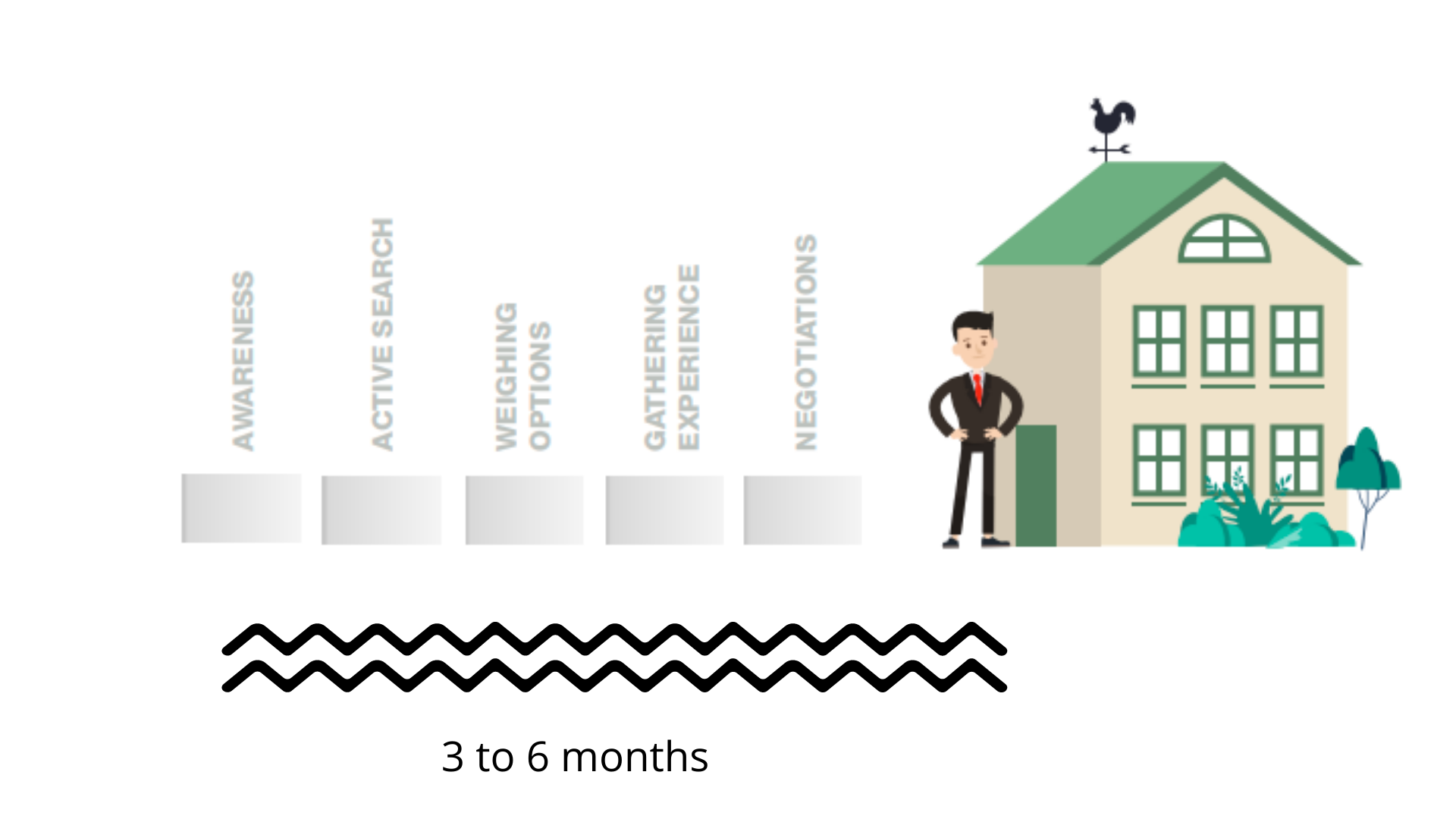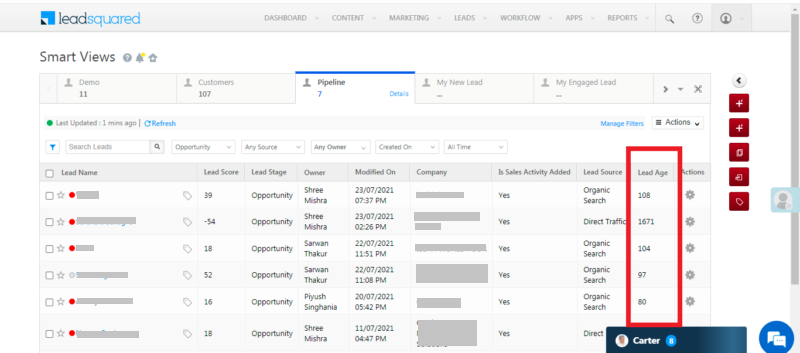You’ve mapped your customer journey in detail. You know exactly how a prospect goes from leaving their email to becoming a paying client. Your support and sales teams are perfectly trained to move prospects from stage to stage.
But, do you know if your sales process is working effectively? There is an abundance of metrics to measure the success of sales, and they vary from business to business. So, what factors should you check if you don’t get the expected result?
Let’s go over the most important metrics for an effective sales process and the steps you may follow to improve them.
1. Track sales cycle length
Sales cycle length determines the amount of time since a prospect first contacted the business to closure.
By measuring all the steps in the customer journey, you can estimate how much time an average sale takes. This information lets you forecast your revenue, which is important for creating a business strategy.
To calculate sales cycle length, divide the total number of days needed to close a sale by the total number of deals. The resulting number will vary for different products because of the following factors:
- Price. More expensive items may take longer to sell.
- Payment terms. The necessity to sign a contract elongates the sales cycle.
- Market maturity. How ready are your customers to start using your product?
- The number of stakeholders. The number of people needed to close the sale may also affect the sales cycle.
Average sales cycle length = Total number of days to close the sale / Total number of deals
Where,
Total number of days to close the sale = number of days from first contact to conversion (for all deals)
Another benefit of tracking sales cycle length is the opportunity to determine where your leads stall in the sales process. The most common reasons for slow pipeline sales are non-qualified leads, insufficient lead nurturing, and unidentified pain points. All these should be addressed by revising your sales reps’ coaching methods.
Often the lack of resources or understanding of specific steps reps should take with a deal results in slow sales. Thus, ensure both your agents and customers have easy access to information — this relieves the work and improves satisfaction from dealing with your company.
There’s a notion that the sales cycle length is usually longer in B2B and shorter in B2C segments. However, that’s not always true. High-value/high-stake items like buying a house will take longer – typically 3 to 6 months.

Similarly, choosing a college will take longer than choosing an online course.
But you can always make the sales process simpler and value-driven to shorten the sales cycle. For instance, online forms, self-serve portals, chatbots, etc., are the tech tools that help buyers with the information they need – right at the time when they are about to make a purchase decision.
2. Calculate opportunity win rate
Opportunity win rate shows how many deals you won against the total number of opportunities created.
Opportunity win rate = Closed deals / Total number of opportunities * 100
You or your sales agent have contacted a person, talked about their needs, and explained how your product or service could help them. They are interested yet need more information before they decide to buy. That’s an opportunity.
Now you have to nurture their interest and work to integrate your product into your client’s business or lifestyle to win that opportunity.
An unacceptable opportunity win rate affects your entire sales process success. Thus, to identify the reasons, you should look at possible issues across all its stages. Do your sales reps need more training so they could spend less time at the top of the sales funnel? If they stall towards the end of the sales process, do they address objections adequately and know how to sell the value of your product?
3. Know your leads to sales qualified leads ratio
This metric shows how well your sales team qualifies leads and moves them through the sales funnel. It also indicates the quality of your leads.
As the name suggests, to calculate the ratio, you should divide the number of leads that resulted in sales by the total number of leads.
Lead to sales qualified lead (SQL) ratio = Number of leads that resulted in sales / Total number of leads
The lower leads to sales qualified leads ratio mean you do not attract enough people interested in purchase. Usually, it’s about the effectiveness of your marketing channels.
To improve your leads to sales qualified leads ratio, check if your sales and marketing teams work in line. Statistics say that tightly aligned companies grow their profit 27% faster than those that ignore the sales-marketing link.
Another reason for the few qualified leads may be the lack of research used for the buyer persona creation. Again, it’s crucial to deliver a highly personalized experience to your leads. So consider using automated distribution software to segment your audience and help them through all the steps in a sales process smoothly.
It’s also important to create high-quality, relevant content and provide it in an engaging way. Thus, check if your email subject lines for sales call the desire to click on them and whether your website and social media feed are visually pleasing.
4. Monitor customer lifetime value
A completed sale doesn’t mean the end of the story with the client. Instead, most successful businesses treat it as the beginning of a relationship and get over 40% of their revenue from just 8% of their loyal customers.
Therefore, knowing an average customer lifetime value helps you measure the relationship with your customers in terms of profits. Simply put, it is how much profit your company can get from one customer over a given period.
The metric also measures the effectiveness and efficiency of your marketing to pinpoint those leads that are likely to bring the most revenue.
Below is the formula to calculate customer lifetime value:
Customer lifetime value (CLV) = Lifetime value * Profit margin
Where,
Lifetime value (LTV) = Average value of sale * number of transactions * retention time period
To improve CLV, ensure you provide the best experience for your customers. This includes personalization, targeted marketing campaigns, constant improvement of your customer service, and regular reassessment of customers’ pain points.
5. Watch customer churn
Churn rate is the percentage of customers that stopped using your company’s product or service during a certain period. You can calculate it by dividing the number of lost customers by the total number of prospects at the beginning of the sales cycle.
Customer churn rate = Number of lost customers / Total number of customers at the start of time period * 100
According to HubSpot, 72% of companies that generate less than 50 new opportunities per month fail to achieve their revenue goals. For instance, if you’re losing selling opportunities faster than you’re generating them, your sales process will halt.
On the other hand, if you’re constantly experiencing a lack of new prospects, your revenue will be limited. It signifies the lead generation problem, which you can solve by tweaking your approach. Popular tactics involve introducing a lead magnet (like a guide to selling an eBook), giving out a sample of your product, or starting a value-driven conversation.
6. Track the number of opportunities that made it to the next stage
It is also called the pipeline conversion rate, or the percentage of opportunities or deals that passed one stage of the process and moved to another. This metric helps you evaluate the health of each step in the sales process and define where your sales funnel needs optimization.
Pipeline conversion rate = Number of conversions at a certain stage / Total number of leads that entered the stage * 100
For example, let’s say you’re in an auto insurance business, and your stage movement rate is 60% (meaning the conversion rate from one stage to the next). But moving from Step 2 to Step 3 results in a 30% conversion rate. Assuming Step 2 means registering for a phone call and Step 3 means call completion, you need to work on encouraging your prospects to show up for a conversation.
You can go back to the buyer persona to determine more possible touchpoints with your business, look for new engagement techniques, outsource insurance call leads, and so on. It will benefit the other sales steps downstream too.
Besides keeping an eye for problematic stages with low conversion rates, you should also become alert if the rate becomes abnormally high. While this usually means you’re generating highly targeted leads, your total created opportunities number may suffer. So, you might want to check if the previous stage is too complicated and rework it.
Another benefit of monitoring your pipeline conversion rate is that it helps you take a closer look at your top-performing sales agents. By analyzing their performance at each stage, you can deduce what they do differently. You can also use this information to better train the rest of your team.
7. Look at the age of sales opportunity
To avoid wasting resources on a dormant sales opportunity, you should monitor its age. In other words, the time since the opportunity was created. This metric shows how much time a prospect has spent at a certain stage of your sales funnel.
The longer a prospect sits at the same stage, or the older the sales opportunity is, the lesser is the chance of you winning the deal. Delays might mean that the prospect isn’t that interested in your product or service or that your sales agent experiences issues.
Watching out for this metric will help you keep your list down to winnable deals. It is also the final indicator to check before you should decide to give up on that prospect.
You can track the lead age and interactions with them through LeadSquared Sales Execution CRM. The below screenshot illustrates this.

In LeadSquared, You can create Smart Views to track the pipeline efficiently. It helps managers and sales reps:
- Manage leads, marketing activities & sales tasks all in one place.
- Setup views based on your favorite filters.
- Get daily reports on the views you create.
Moreover, sales managers can create Smart Views and assign them to different teams based on their roles and responsibilities.
Use metrics to improve your sales performance
The metrics that we discussed above are a good measure of the success of your sales process. You can use them to predict your future profit and decide what products you should advertise more. Moreover, these metrics will help you evaluate the performance of your sales team. You can thus reward the employees who bring you the most revenue.
Don’t worry if your metrics fluctuate over time. That’s a natural process. Depending on the current climate, focus on one or two that work best for your advantage. Make decisions supported by data, but don’t let robust numbers distract you from your goals.
[Also read: Everything you need to know about the MEDDIC sales process]










